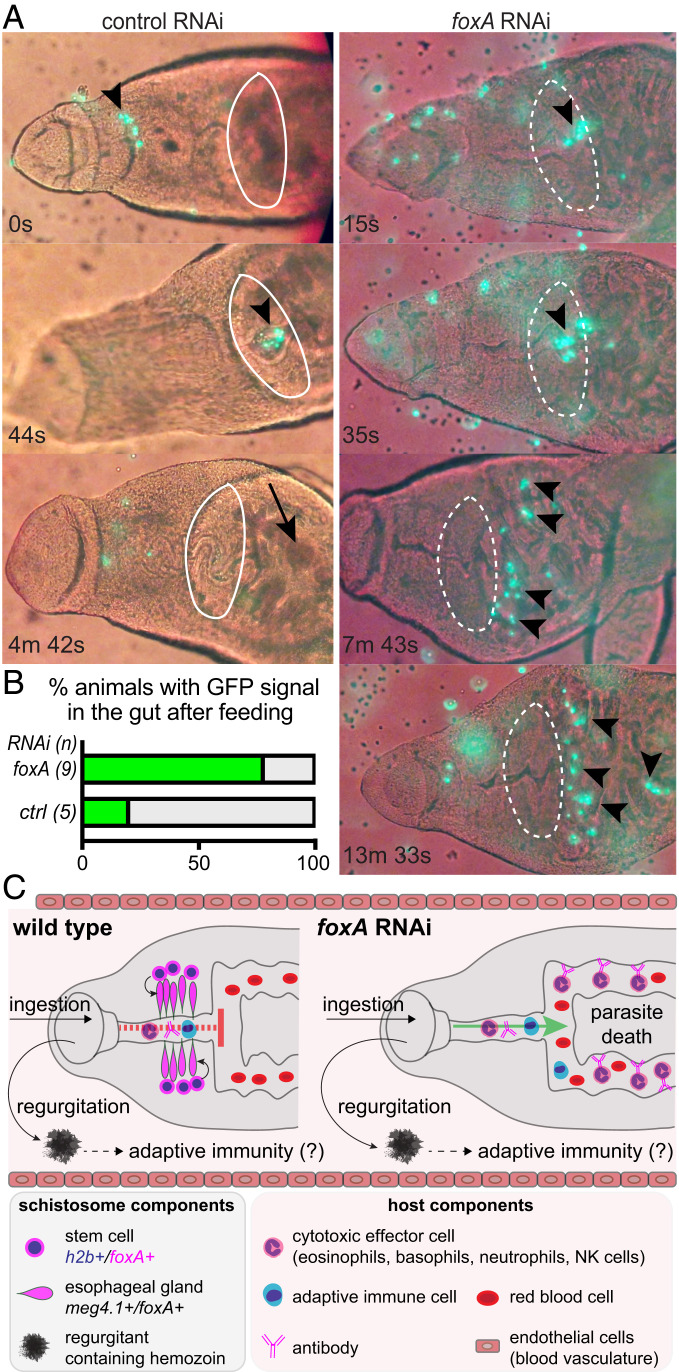Fig. 6.
Schistosomes lacking the esophageal gland fail to lyse ingested immune cells. (A) In vitro feeding of foxA RNAi parasites with GFP-expressing immune cells (Materials and Methods and Movie S2). Time stamps indicate time elapsed after initiation of a grabbing motion. White ellipse indicates presence (solid) or absence (dotted) of the esophageal gland. Arrowheads: GFP+ cells; arrow: gut with no GFP signal. (B) Percentage of animals with GFP signal in the gut after feeding. n: total number of worms. (C) Model for esophageal gland-mediated immune evasion. Regurgitant from the parasite, which contains schistosome gut proteins, can trigger host adaptive immunity and production of antischistosome antibodies. In the presence of an esophageal gland, cytotoxic effector cells (and perhaps antibodies) are blocked from entering into the schistosome gut. In the absence of an esophageal gland, however, antischistosomal antibodies and cytotoxic effector cells have access to the parasite’s gut, where they can trigger death from within the worm.

